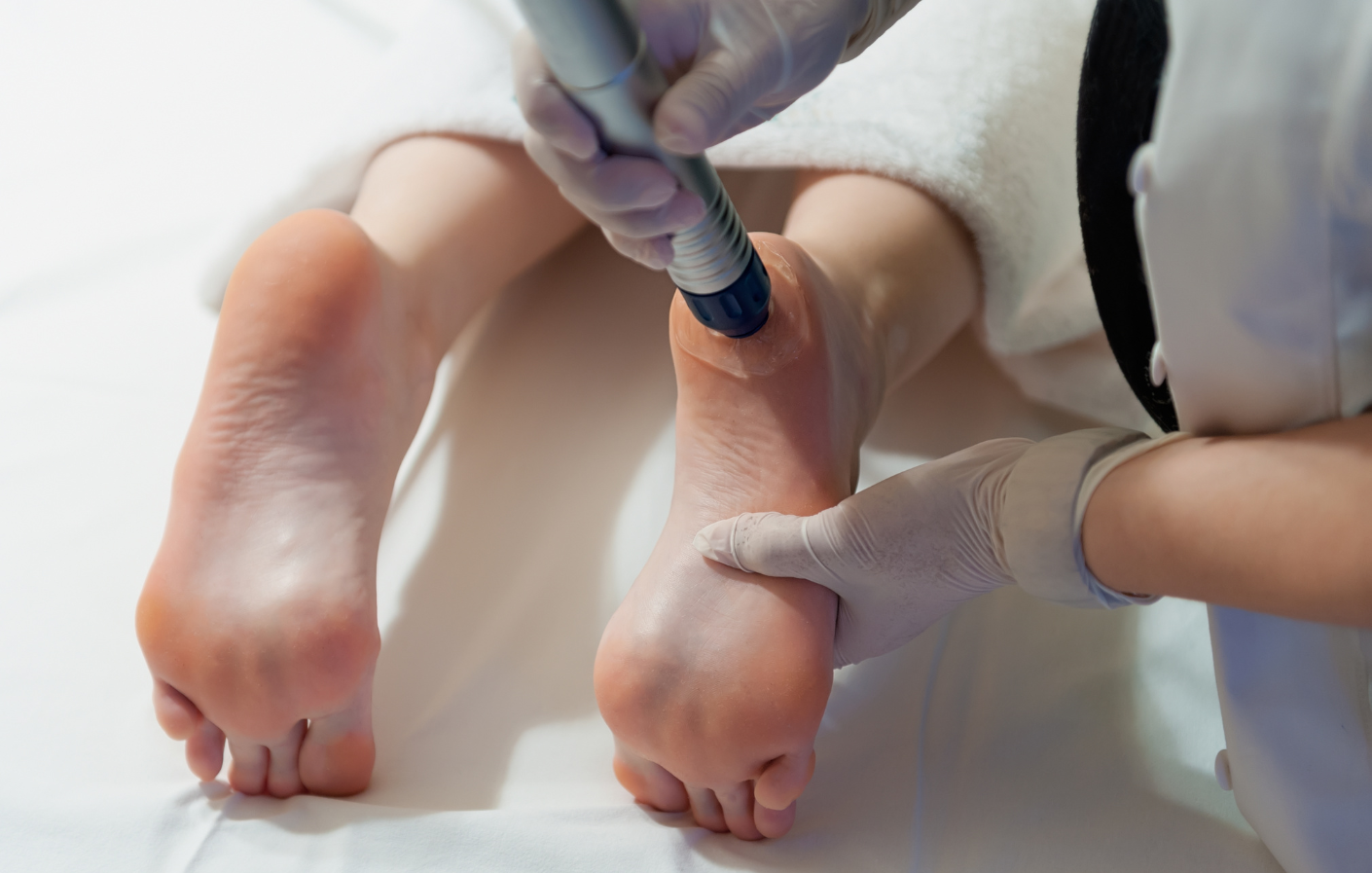

Ingrown toenails can be painful and uncomfortable, so identifying the ‘red flags’ of ingrown nails early on can be helpful in getting prompt treatment and reducing the risk of complications. So what are the top red flags you should be looking out for?
One of the most significant red flags for an ingrown toenail is persistent pain and discomfort, especially when pressure is applied to the affected toe. This discomfort typically occurs along the edge of the toenail, where it begins to grow into the surrounding skin. Ignoring this pain can lead to further irritation and inflammation, making it essential to address the problem promptly. If left untreated, an ingrown toenail can become increasingly painful and you’ll run the risk of developing an infection.
Swelling and redness around the affected toenail are common signs of inflammation, indicating that the body is responding to the presence of an ingrown toenail. As the toenail continues to dig into the surrounding skin, the body’s immune response may cause the area to become swollen, tender, and warm to the touch. If swelling and redness persist or worsen, it’s essential to seek medical attention to prevent complications such as infection.
The presence of pus or drainage around the ingrown toenail is a clear indication of infection and should be taken seriously. Infections can occur when bacteria enter the compromised skin around the toenail, – which can appear yellow, white, cloudy, green or a mixture of this – aim to have your ingrown toenail treated promptly so that the infection (and the ingrown nail) doesn’t get a chance to worsen.
A serious ingrown toenail often presents with severe pain, significant swelling, and visible signs of infection such as pus or drainage. The surrounding skin may appear red and inflamed, and there may be increased sensitivity to touch. In some cases, the toenail may become embedded deep into the surrounding tissue, making it difficult to see and gauge how big the nail spicule is and how deep it goes down. If left untreated, a serious ingrown toenail can lead to complications such as cellulitis or abscess formation, requiring more aggressive treatment.
The fastest way to get rid of an ingrown toenail is to seek professional medical treatment from a podiatrist, given that podiatrists treat ingrown nails every single day, both surgically and non-surgically. Depending on the severity of the ingrown toenail, treatment options may include gently trimming the nail back to remove the sharp spicule, or removing a portion of the nail to relieve pressure on the surrounding skin. Your podiatrist will present your treatment options and make recommendations both based on your symptoms and on your ingrown toenail history.
It’s not recommended to dig out an ingrown toenail at home, as this can lead to further complications and may worsen the condition. Realistically, it’s very hard to see where the ingrown toenail is growing down and how deep it is – which is why so many people get it wrong – and can even push the nail further down and aggravate their toes (and symptoms).
You also need the right tools – while as podiatrists we have a tonne of experience with treating and removing ingrown nails, we wouldn’t be able to do it nearly as easily without the wide range of specialist and sterile medical tools that we have available. Otherwise it’s like trying to cut vegetables with a butter knife! This is why podiatrists are the preferred treatment providers for ingrown toenails – especially those that offer a dedicated ingrown nail clinic like we do here at Perform Podiatry.
While some mild cases of ingrown toenails may resolve on their own with proper home care, most cases should be seen by a podiatrist to prevent complications and help achieve long lasting resolution.
The healing time for an ingrown toenail depends on the severity of the condition and the chosen treatment method. Mild cases may heal within a few days after the ingrown nail has been removed, while more severe cases that require nail surgery, for example, may take several weeks to fully resolve. The key is removing the nail spicule, as healing can’t really begin prior to this.
If left untreated, an ingrown toenail can lead to complications such as infection, abscess formation, and ongoing pain. It won’t heal until the ingrown portion of the nail has been removed.
There are definitely steps you can take to reduce your risk, such as properly trimming your nails, wearing properly fitting shoes, and avoiding trauma to the toes.

We’ve welcomed the Nu-Tek low-level laser into our podiatry clinic. Here's how you tell if it could be the answer to your foot
pain.

Otherwise known as radial pressure wave therapy, shockwave therapy is a device held by our podiatrists and positioned against your foot or leg at the site of your injury.
Keeping your family on their feet and helping them to walk, run, play and exceed their goals is why we love getting up in the morning.
We're located inside the One Health medical centre at Building 122 Remuera Rd, Remuera, Auckland 1050, New Zealand
| MON - SAT | 8:30am – 6:00pm |
| SUN | Closed |
Make an Appointment
Online Schedule